

Guitar plant is a shrub with beautiful summer blooms.
General Guitar plant facts
Name – Lomatia tinctoria
Family – Proteaceae
Type – evergreen shrub
Height – 6 ½ feet (2 meters)
Exposure – full sun
Soil – well-drained, acidic
Foliage: evergreen – Flowering: summer
Caring for it is rewarding and enjoyable. Here are the key tips for growing it.
To ensure proper blooming, there are a few steps you can take to make sure your guitar plant is satisfied.
This is a shrub that is easy to care for when grown outside. However, you must make sure drainage, exposure and soil type match its needs.
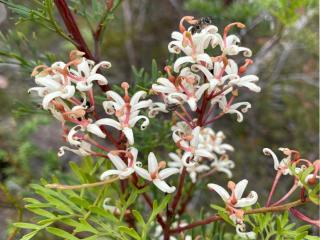 Plant in spring for best settling in.
Plant in spring for best settling in.Guitar plant, when planted outdoors, is drought resistant up to a certain point.
Since its root system is shallow, you can easily succeed in growing a guitar plant in a pot.
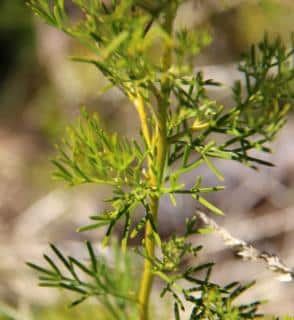 Select a large-sized pot right from the start.
Select a large-sized pot right from the start.This shrub readily spreads through rhizomes.
Seeds are also a very effective means of propagation.
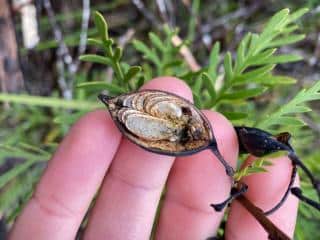 The flowers and seeds, however, are what have given the plant its name.
The flowers and seeds, however, are what have given the plant its name.Lastly, cuttings will start easily, especially from branches that haven’t yet sprouted flowers.
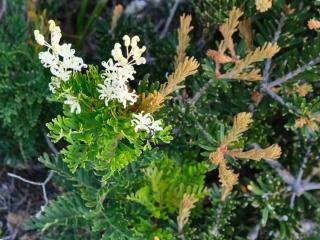
After blooming, remove wilted flowers to trigger new blooming. If not, the plant will instead direct its efforts to growing seed pods.
Lastly, remove dead wood often and clear out inside branches. The goal is to let light penetrate to the center.
>> Our video on Guitar plant care << (Activate translation subtitles)
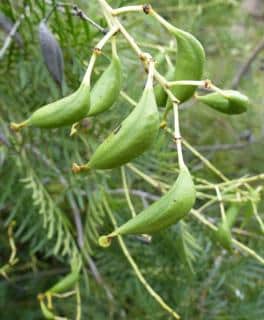
If your tree is growing outside in the ground, water in case of prolonged dry spells or heat waves during the first two years.
This Tasmanian shrub is usually immune to most diseases. The only risk is overwatering in case of improper drainage.
If the leaves start turning black, it’s often linked to excess watering. Reduce watering frequency and check that the soil drains well enough.
It is a great source of nourishment for moths and butterflies, too.
Guitar plant will pair well with most of the plants for acidic soil.
However, since it needs a lot of sun, it’s best to keep it as the tallest plant in the flower bed.
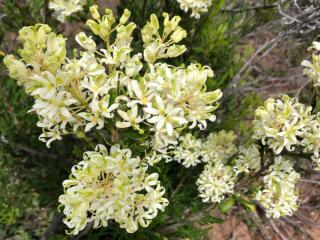
Native to Tasmania, off the coast of Australia, it grows into a round, bushy shrub. The white or ivory-colored flowers form elegant panicles. They’re especially attractive, not only to insects but to garden lovers, too! They have a powerful, wafty scent that is pleasantly intriguing.
Leaves are amazingly intricate, fern-like and lush green in color. In this they’re similar to herbs such as dill and other flowers like cosmos. But the plant it most resembles is the Grevillea flower.
The latin name for this plant is Lomatia tinctoria. Though its native habitat is only the island of Tasmania, it is now grown and sold across the world for the enjoyment of many!
The blooming and delicately-scented fragrance make it an ideal shrub for containers. Use this to decorate your patio or balcony!